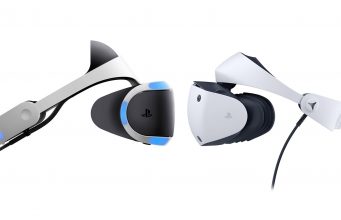PSVR 2 vs. PSVR – How Far Has PlayStation VR Come Since 2016?
PlayStation VR 2 is just around the corner, and by this point Sony detailed all of the headsets core specs and features. Comparing PSVR vs. PSVR 2 specs side-by-side shows us how much has changed since Sony’s first consumer headset released in 2016.
Update (February 6th, 2023): With PSVR 2 launch day just around the corner, we’ve updated this spec sheet and commentary with the latest info, now including PSVR 2’s weight and cable length.
Among the major players in the VR space, Sony has bided its time on a follow-up to the original headset. By the time PSVR 2 releases on February 22nd, 2023, it will have been six years and four months since the original PSVR released back in 2016.
The original PSVR was released about six months after the first major consumer VR headsets—HTC Vive and Oculus Rift—hit the market back in 2016. However HTC, Oculus, and others have released many new headsets in the interim. To its credit, PSVR managed to feel competitive for many years after its release, but eventually began to feel dated as the rest of the pack charged ahead into VR’s ‘gen-2’ epoch.
Now here we are in 2023 with PSVR 2 on PS5 set to bring new life to Sony’s VR ambitions. Let’s take a look at how PSVR and PSVR 2 specs compare:
PSVR vs. PSVR 2 Specs |
||
| PSVR 2 | PSVR | |
| Resolution | 2,000 x 2,040 (4.1MP) per-eye, OLED, HDR | 960 x 1,080 (1.0MP) per-eye, RGB OLED |
| Refresh Rate | 90Hz, 120Hz | 90Hz, 120Hz |
| Lenses | Fresnel | Single element non-Fresnel |
| Field-of-view (claimed) | 110° (diagonal presumed) | 100° (diagonal presumed) |
| Optical Adjustments | IPD, eye-relief | Eye-relief |
| Connectors | USB-C (no breakout box) | USB, HDMI (breakout box) |
| Cable Length | 4.5m | 4.4m |
| Tracking | Inside-out (no external beacons) | Outside-in (external camera) |
| On-board cameras | 4x IR (external), 2x IR (internal) | None |
| Pass-through View | Yes | No |
| Input | PSVR 2 Sense controllers (rechargable), DualShock 5 (rechargable) eye-tracking | DualShock 4 (rechargeable), PS Move (rechargeable), PS Aim (rechargeable), voice |
| Audio | 3.5mm aux output | 3.5mm aux output |
| Microphone | Yes | Yes |
| Haptics | Controllers, headset | Controllers |
| Weight | 560g | 600g |
| Release Date | February 22nd, 2023 | October 13th, 2016 |
| Console Compatibility | PS5 | PS4, PS4 Pro, PS5 (with adapter, only PS4 compatible VR games) |
PSVR 2 Specs & Features – Beyond the Numbers
It’s easy to get lost in the numbers so let’s really break down the major changes between the headsets.
Resolution, Field-of-view, & HDR
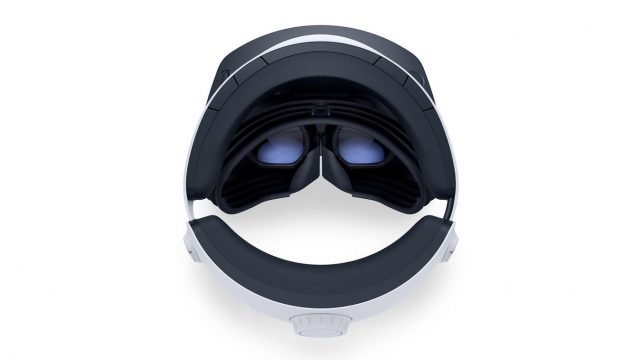 For one, PSVR 2 has about four times the pixel count of PSVR. All things being equal, that means images inside the headset would look about four times sharper, which is a substantial improvement.
For one, PSVR 2 has about four times the pixel count of PSVR. All things being equal, that means images inside the headset would look about four times sharper, which is a substantial improvement.
However, we know that all things won’t be equal. Sony quotes the field-of-view of PSVR 2 at 110° compared to 100° for PSVR 1. That means that while PSVR 2 has many more pixels, they’ll be stretched over a slightly wider area. Overall the sharpness of the headset should still be substantially better, but not quite as much as the sheer increase in pixels would suggest.
As for the field-of-view itself, 100° to 110° isn’t a huge leap, but you’d surely notice it if you compared the headsets side-by-side.
Unless a surprise headset beats it to the punch, PSVR 2 will be the first commercially available VR headset to launch with an HDR (high-dynamic range) display. That means it’s capable of a much wider range of brightness than a typical headset. Functionally this means the headset will be able to produce scenes with more life-like brightness which in theory could improve immersion considerably.
Granted, in our PSVR 2 preview we didn’t clearly notice the headset’s HDR capabilities, though it isn’t clear if the games on display had been optimized for the feature yet. Another possibility is that the HDR mode simply may have the kind of peak brightness you’d see from an HDR TV. So at this point it’s unclear if HDR will be a ‘nice to have’ feature, or something that defines the headset compared to its contemporaries.
Lenses & IPD
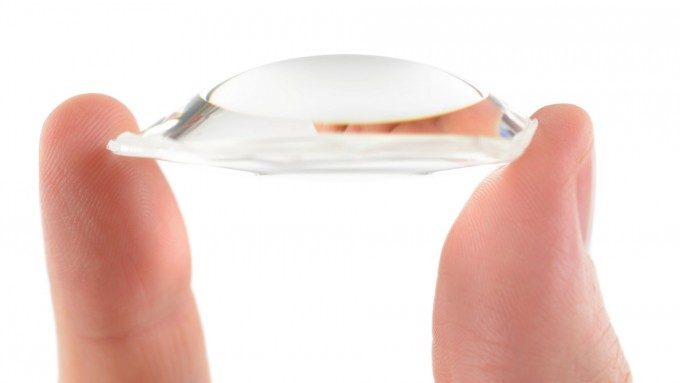
The original PSVR was for a long time the only major headset on the market that didn’t use Fresnel lenses, which are known to cause glare (in exchange for other benefits). PSVR 2, on the other hand, will be following the rest of the industry which has long moved to Fresnel lenses as the industry standard.
The lenses in the original PSVR had a large enough eye-box that Sony didn’t feel the need to include an IPD adjustment (which adjusts the lenses to match the distance between your eyes). However, PSVR 2 does have an IPD adjustment which is a good idea for many reasons, so we’re glad to see this addition. Meanwhile, PSVR 2 retains the eye-relief feature found on the original PSVR, which is useful for dialing in the most comfortable view and to make room for those with glasses.
Ease-of-use & Tracking
Even though this reads minimally on a spec sheet, this is a huge deal for PSVR 2—no more breakout box and no more external camera.
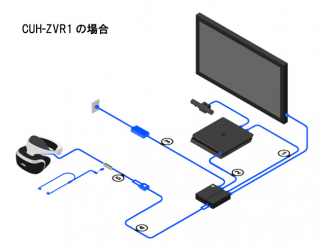
PSVR 1 ships with a large breakout box that accepts two plugs from the headset that run along a thick cable. The breakout box has to be connected to the host console by a USB cable and an HDMI cable (and also has to be plugged into the TV). And don’t forget that it needs its own power supply. That’s six… yes, six, individual plugs running into and out of the box.
Needless to say, the breakout box was a bit of a pain. Not only did it complicate the user’s A/V set up, in some cases it even created resolution and HDR issues for certain TVs; this was partly fixed with a later revision to the PSVR hardware, but even so the breakout box was a hindrance to the overall experience.
Oh and don’t forget about the camera. PSVR 1 required the PS4 camera for tracking, which meant having another peripheral plugged into your console. Not only that, but the camera was never made for VR in the first place and it suffered from poor tracking accuracy and limited coverage.
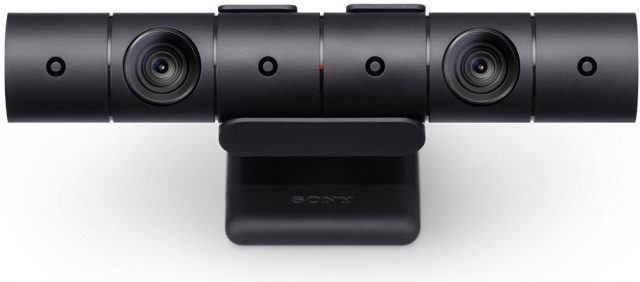
Sony has identified and eliminated these issues for PSVR 2. The breakout box is completely gone; the headset will plug into the PS5 with a single USB-C cable through the USB-C port conveniently placed right on the front of the PS5. That’s great news but we surely hope that little connector can hold the cable in tightly enough to not get yanked out if the cord gets tugged during intense VR sessions!
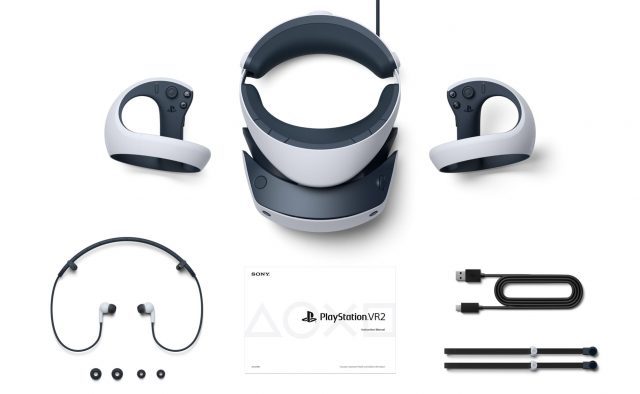
And the PS4 camera is gone too. Instead of using ‘outside-in’ tracking with a camera that sits on your TV, PSVR 2 has on-board cameras for ‘inside-out’ tracking. That means the cameras on the headset itself are used to track the player’s head movements. This eliminates another extra peripheral compared to PSVR 1.
But there’s a risk in Sony’s move to inside-out tracking. The quality of inside-out tracking varies greatly between headset makers. While the inside-out tracking on Quest 2, for instance, is very good, the inside-out tracking on Windows VR headsets leaves much to be desired. Only a handful of companies in the world have shown that they can deliver top-tier inside-out tracking for VR.
Granted, the bar is pretty low in this case. Tracking on PSVR 1 was arguably the worst among major headsets on the market, but it still sold very well regardless. Even if PSVR 2 has just ‘ok’ inside-out tracking, it could still be an improvement over the poor tracking of the original.
All that said, Sony tends to be pretty serious about VR, and I expect they’ll have a decent solution for inside-out tracking, if not a very good one.
Continue on Page 2: Eye-tracking, Controllers, Audio, & Headset Haptics »
PSVR 2 vs. PSVR – How Far Has PlayStation VR Come Since 2016? Read More »
